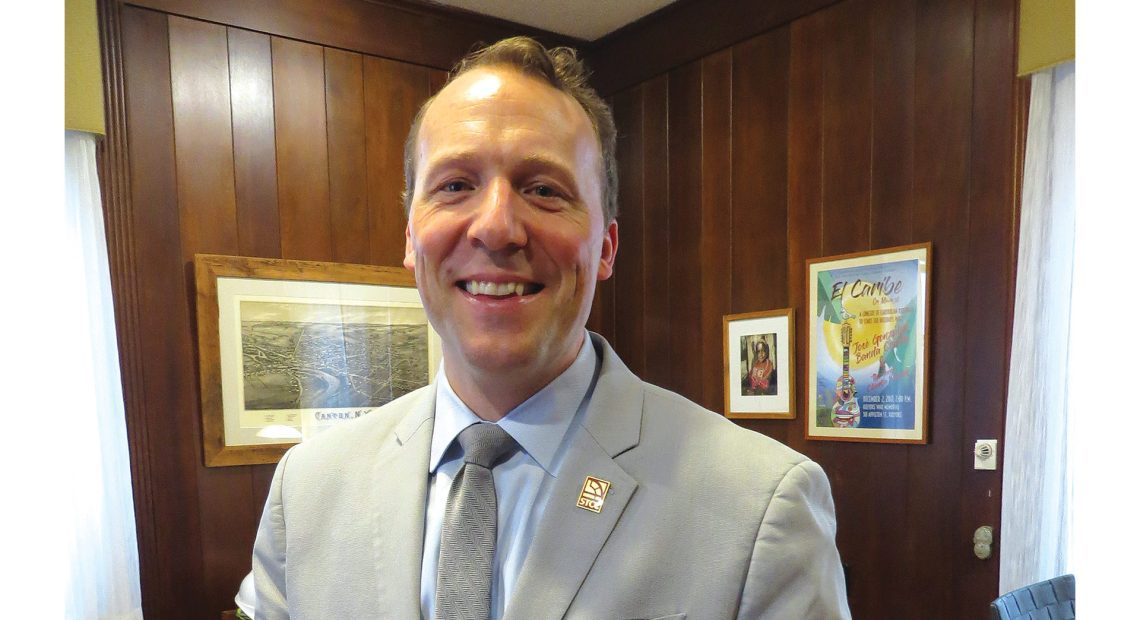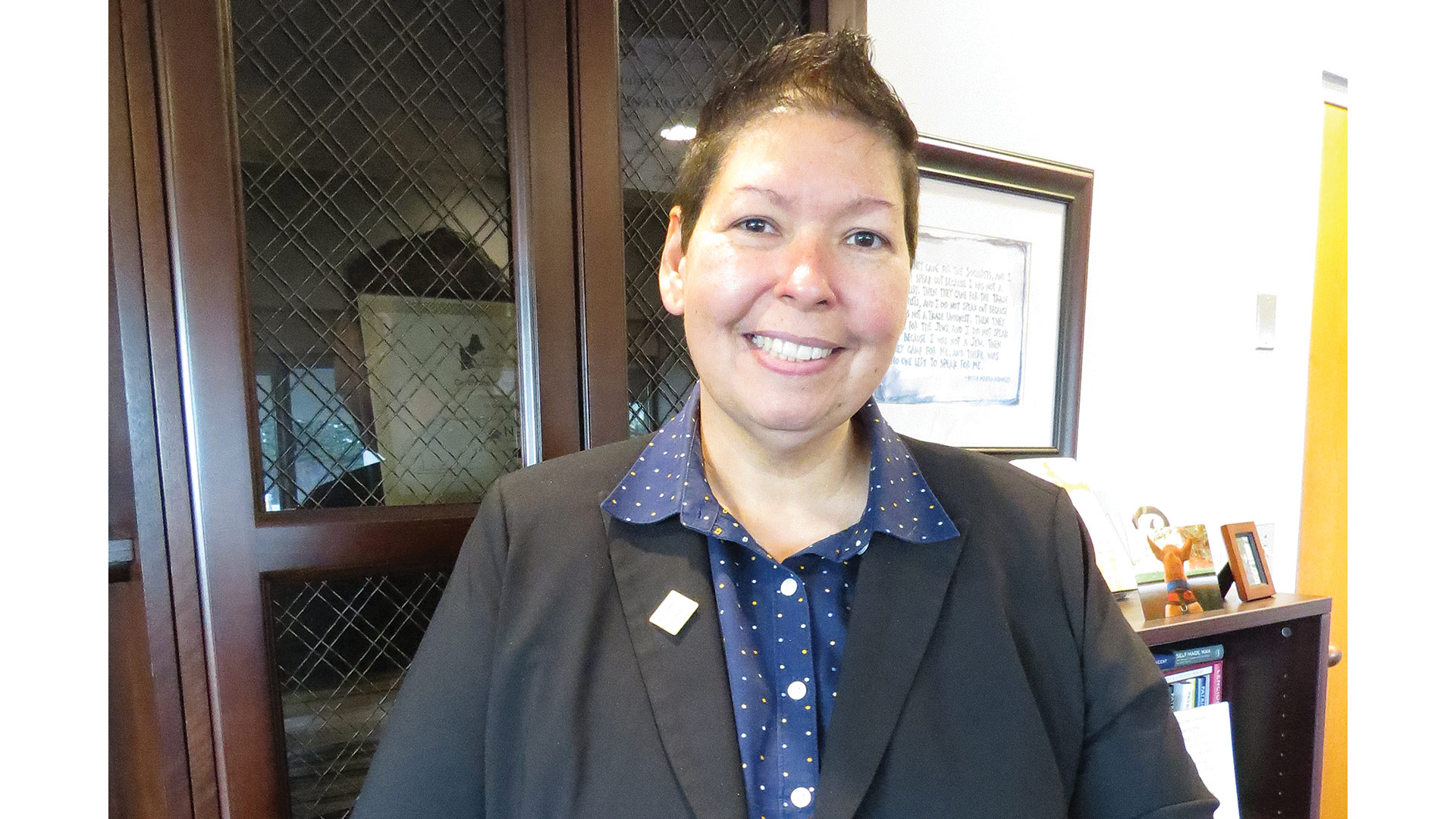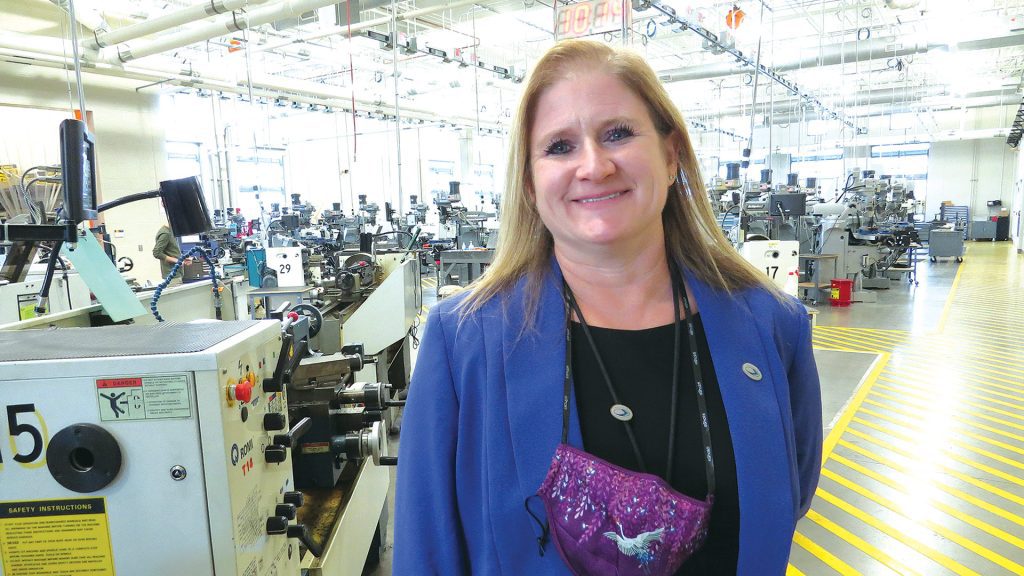
Community Colleges Face Falling Enrollment, Questions About the Future
A Stern Test Continues

Springfield Technical Community College President John Cook
For the area community’s colleges, the enrollment numbers continue to fall, with annual declines recently in the double digits. There are many reasons for these declines, which actually started well before COVID but were greatly exacerbated by the pandemic. With many students and potential students now in a state of what one college president called “paralysis,” there are hard-to-answer questions about what ‘normal’ will be like moving forward.
It’s been a while since anyone has talked about parking at Springfield Technical Community College — or the lack thereof.
John Cook, the school’s president, sometimes yearns for the days when they did.
And that was most days. Indeed, going back decades, parking was a problem at this urban campus that sits on the site of the Springfield Armory, despite numerous efforts to add more. By the time Cook arrived in 2017, the school was still parking cars on the commons (the old parade grounds converted by the school into athletic fields) the first few days of classes to make sure all students had a space. That practice was no longer necessary after a new lot was built near the Pearl Street entrance in 2019.
These days, there’s plenty of space in that lot and all the others as enrollment at the school continues a downward trajectory, a pattern seen at the other community colleges in the area — one that is defying many of the patterns concerning these schools and the economy, but one that was already in evidence before the pandemic and only accelerated by it.
“People are in a state of paralysis. And that fear, uncertainty, and the unknown is a driving factor for a lot of people; they feel stuck, they feel lost, and they don’t have a sense of even what they should be preparing for.”
Indeed, since STCC saw enrollment hit its high-water mark just after the Great Recession of 2008, roughly 7,000 students, the numbers have been declining steadily to the present 4,000 or so.
“We were down 16 or 17% last year, and this fall, we were down another 10%,” said Cook, adding that this pattern has been seen at other schools as well, with COVID-19 adding an exclamation point to the problem. At Holyoke Community College, for example, enrollment saw another double-digit decline in 2021, and President Christina Royal said that, with just six weeks to the start of the spring semester, the numbers are down another 7% or so from this time last year.
While most all colleges are seeing enrollment declines at this time, community colleges are being especially hard-hit, in large part because the students who attend these schools, especially older, non-traditional students, are those most impacted by the pandemic and its many side effects, from unemployment to issues with childcare to overall problems balancing life, work, and school.

Christina Royal says some students and potential students are stuck in state of what she called ‘paralysis,’ not knowing exactly what kind of career to prepare for.
While many have returned to the classroom, others have remained on the sidelines, and they are in a state of what Royal likened to paralysis, not knowing exactly what to do with their lives or even what course of study to embark upon. And this distinguishes what’s happening now in the economy from almost anything that has happened before.
“A recession, as difficult as it is, is a predictable circumstance — and it has been up to this point,” she noted. “People are familiar with the ebbs and flows of the economy. What we’re dealing with now is fear, uncertainty, and the unknown.
“Now people are in a state of paralysis,” she went on. “And that fear, uncertainty, and the unknown is a driving factor for a lot of people; they feel stuck, they feel lost, and they don’t have a sense of even what they should be preparing for.”
She said these factors help explain why enrollment continues to decline at a time when logic says they should be rising based on previous performance. Indeed, community-college enrollment would normally rise when the country is in recession or something close to it, when unemployment is still higher than average, and, especially, when businesses in every sector, from manufacturing to IT to healthcare, are facing a workforce crisis unlike anything seen before. And it would also be expected to rise when the cost of four-year schools continue to soar and many parents are looking to community colleges as a sound alternative for those first two years.
“A two-year college is just as good as a four-year school, and it can potentially be a feeder to the four-year college, where they will do even better because they have the foundation from us.”
Michelle Coach, campus CEO at Asnuntuck Community College in Enfield, agreed. She said enrollment at ACC (one of 12 schools currently being merged into something called the Connecticut State Community College), which hit its peak of just under 1,000 a few years ago, is now in the mid-700s for full-time equivalents, up from a low of 650. The numbers are down for several reasons, including restrictions due to COVID that kept inmates from four prisons within just a few miles of the school from attending.
Even enrollment in the school’s popular manufacturing program, which has been supplying graduates to area plants in desperate need of workers, is down, she said, adding that many who would be applying are cautious and hesitant for all those reasons mentioned above.
Overall, many factors are contributing to the falling numbers, from COVID to smaller high-school graduating classes. The ongoing challenge for schools, Coach said, is to tap into new pools of students and consistently stress the value — in the many ways it can be defined — of a community-college education.
For this issue and its focus on education, BusinessWest talked with area community-college leaders about the present and, to the extent they can project, the future as well. In short, these administrators don’t know when, or to what to extent, things will return to normal.
Unsteady Course
As she talked about enrollment and the state of community colleges today, Royal, like the others we spoke with, reiterated that the declines in the numbers started well before COVID.
Indeed, if one were to chart the numbers from the past 15 years or so, she explained, there would be a bell curve, or something approximating it, with the numbers slowly rising until they hit their peak just after the Great Recession and then beginning a gradual tumble after that.
“When I came in in 2017, we had already seen seven consecutive years of declining enrollment — this is certainly a long-term trend,” she said, adding that she believes there is some artificiality in comparing today’s numbers to the high-water marks of a decade or so ago. “If you take out the effect of the recession, both the ramp-up and the decline afterwards, it doesn’t look as extreme and bumpy.”

Michelle Coach says there is general optimism that enrollment numbers at ACC and elsewhere in Connecticut will start to move higher, especially with the many incentives being offered.
But ‘gradual’ turned into something much more pronounced during the pandemic, said those we spoke with, noting that enrollment is off 20% or more from a few years ago, and for a host of reasons.
The declines have become the most pressing topic — after ever-changing COVID protocols — at the regular meetings of the state’s 15 community-college presidents, said Cook, adding that, collectively, the schools are looking for answers, a path forward, and perhaps an understanding of what ‘normal’ will look like in the short and long term.
The answers won’t come easily because COVID has created a situation without precedent, and the current trends, as noted earlier, defy historical patterns, he explained, adding that the overarching question now is “where are the people who would be our students? What are they doing?”
And at the moment, many of them are still trying to simply cope with the pandemic.
“They’re still trying to figure out childcare in many cases,” he went on. “Or they may be reconsidering what their own career process might be. And there’s a lot of people who are standing pat and taking stock of what’s important.”
Cook said there has been growth in some numbers, especially those involving students of color and especially the Hispanic population, and there has been growth in some individual programs, such as health science, which the school didn’t have four years ago.
But numbers are down in many areas, including nursing — at least from a retention standpoint — at a time when demand for people in that profession has perhaps never been greater. It’s another sign that these are certainly not normal times.
Royal agreed. “When we have a typical recession, people don’t like the fact that they can’t find jobs or that they’re laid off,” she noted. “But they know that they have to retool, they go back to college, so that they can be prepared for when the jobs come back and the wages start to go up. Now, people are stuck.
“When you have such a global event as COVID-19 has been for our world, then it has put a lot of people in this state of ‘I don’t even know what a couple of months is going to look like — I might not even know what next week is going to look like. How can I think about going to college and starting a future when I’m not even sure what we’re here for anymore, what my purpose is, and what I want to do?’ All of this is causing people to stay still.”
And it’s prompting those running community colleges to do what they can to get them moving again, understanding this may be difficult given those factors that Royal described and fresh uncertainty in the wake of the Omicron variant and rising COVID cases as the winter months approach.
Indeed, most of the colleges are doing some targeted marketing and putting some of the federal-assistance funds to work helping students with the financial aspects of a community-college education.
“We certainly have used every tool available to us to help us with recruitment and retention,” Cook explained, adding that STCC has issued checks of up to $1,500 to help them defray the costs of their education.
“These are not loans … it’s $1,500 to use as you as you decide,” he said. “We’ve done things like that, and we’ve done it for three semesters. This is a real shot in the arm for people.”
Some are taking advantage of the unique opportunity, but many others remain on the sidelines because of COVID-related issues such as childcare, matters that $1,500 checks cannot fix.
At Asnuntuck, the school is being equally aggressive, especially when it comes to recruiting students from the Bay State. Through its Dare to Cross the Line program, Massachusetts residents can attend ACC for the same price as those in Connecticut.
“Currently, 10% of our students are from Massachusetts, and that has stayed fairly consistent,” Coach explained, adding that many enroll in the manufacturing program and a good number in cosmetology, but there is interest across the board. “We’re trying to get the word out, and we’ve done some additional outreach to Massachusetts high-school students.”
Meanwhile, thanks to a grant from the Hartford Foundation for Public Giving, ACC was able to place ‘smart classrooms’ in each of the nearby prisons to allow inmates to take classes, bringing enrollment numbers up somewhat.
Moving forward, with high-school graduating classes getting consistently smaller, there will be greater outreach to non-traditional students, but also a focus on high-school and even middle-school students — and their parents — with the goal of stressing the many advantages presented by the two-year schools.
“For the high schools, we’re trying to change the perception of community colleges,” Coach explained. “In the past, they’ve always said, ‘this is how many students are going to a four-year university.’ Well, a two-year college is just as good as a four-year school, and it can potentially be a feeder to the four-year college, where they will do even better because they have the foundation from us.”
Learning Curves
Overall, Royal and others said it’s clear that community colleges will have to make continual adjustments to bring more people to their schools and see them through to completion of their program. Changes and priorities will likely include everything from a greater emphasis on early college — enabling high-school students to earn credits for college in hopes that this might change their overall career trajectory — to greater flexibility with semester schedules and length of same, to efforts to address the many work/life/school issues challenging students, especially older, non-traditional students.
Royal noted that those who will graduate next spring will have spent their entire time at HCC coping with a global pandemic and everything that has come with it.
These students hung in and persevered, received their degrees, and, in many cases, will be moving on to a four-year school.
“These are the students that have embraced that uncertainty, and say, ‘I’m going to do something with my life; we don’t know what’s going to happen in the world, but I’m going to further myself and be prepared for when we get to the other side of that.’ That’s who you’re going to see in our graduating class.”
What you won’t see are those who became stuck, as she called it, those who didn’t have the inclination or the ability to plow forward during the pandemic.
Just when people can and will move out of this state of paralysis is still a question mark. Until then, parking will remain a non-issue at STCC — and other schools as well — and the region’s community colleges will remain tested by a situation that is defying trends and their own history.
George O’Brien can be reached at [email protected]





